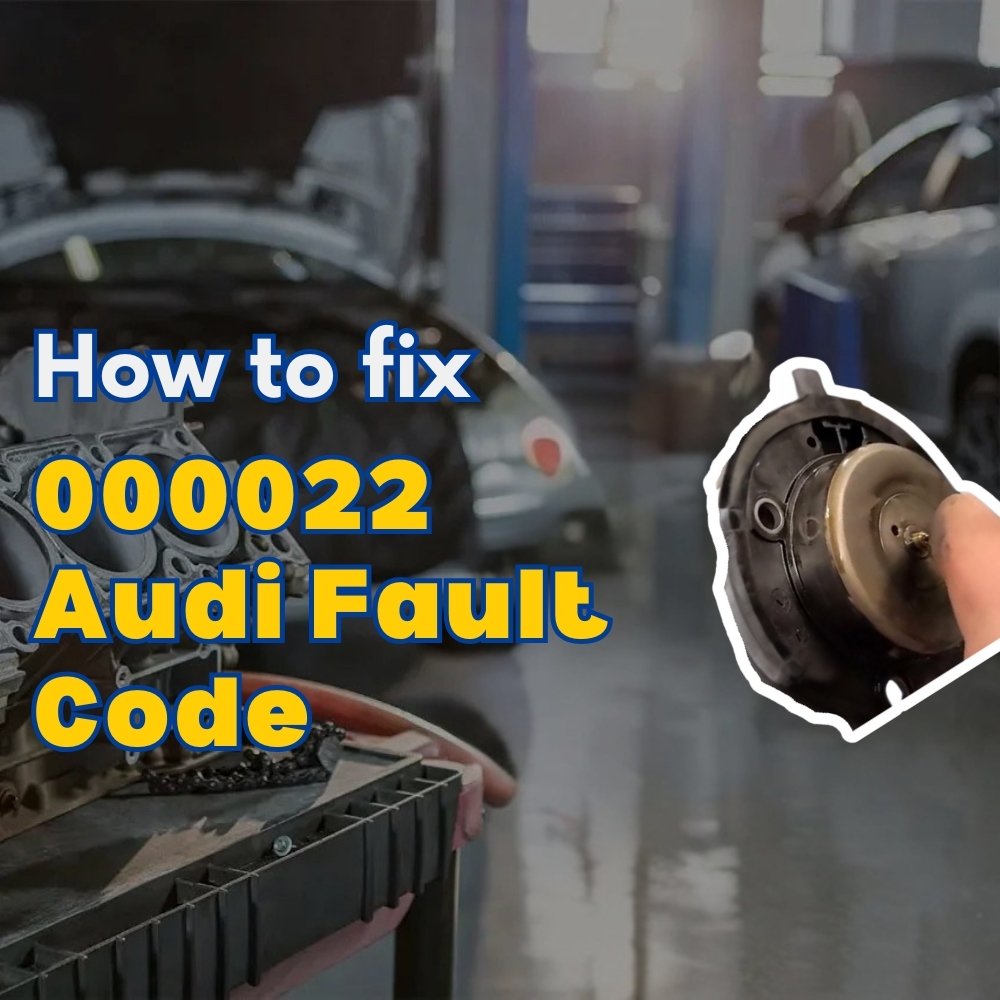The 000022 Audi fault code indicates an “Incorrect Correlation” between the Bank 1 Camshaft Position (CMP) Sensor (G40) and the Engine Speed Sensor (G28). AutoExplain provides comprehensive solutions for diagnosing, repairing, and preventing this fault code, ensuring optimal engine performance and reliability.
1. What Does the 000022 Audi Fault Code Mean?
The Audi fault code 000022 signals a discrepancy between the signals from the Camshaft Position (CMP) Sensor (G40) and the Engine Speed Sensor (G28) for Bank 1. This code, often accompanied by the P0016 code, indicates that the engine control unit (ECU) has detected that the camshaft and crankshaft are not properly synchronized. This desynchronization can stem from a range of mechanical or electrical issues, which need immediate attention to avoid significant engine damage. AutoExplain specializes in identifying the root cause and providing effective solutions to resolve this critical fault.
1.1. Understanding Camshaft and Crankshaft Synchronization
Proper engine operation depends on the synchronized movement of the camshaft and crankshaft. The crankshaft, driven by the pistons, converts their reciprocating motion into rotational motion. The camshaft, in turn, controls the opening and closing of the engine’s valves, regulating the intake of air and fuel and the exhaust of combustion gases.
The ECU relies on data from the CMP and Engine Speed Sensors to maintain this synchronization. The CMP sensor monitors the position of the camshaft, while the Engine Speed Sensor tracks the crankshaft’s speed and position. The ECU uses these inputs to control fuel injection and ignition timing. When the ECU detects an “Incorrect Correlation” between these two sensors, it triggers the 000022 fault code, indicating a potential timing issue.
1.2. Common Symptoms Associated with the 000022 Fault Code
Several symptoms can indicate the presence of the 000022 fault code in your Audi. These include:
- Illuminated Check Engine Light (MIL): This is often the first sign that something is amiss. The Malfunction Indicator Lamp (MIL) lights up to alert the driver to a detected issue.
- Rough Engine Running: The engine may run unevenly, especially at idle or low speeds. This can manifest as vibrations or a general feeling of instability.
- Reduced Engine Performance: The engine might feel sluggish, lacking its usual power and responsiveness. Acceleration may be notably slower.
- Difficulty Starting: The engine may take longer to start than usual, or it may stall shortly after starting.
- Engine Noise: Unusual noises, such as ticking or rattling, may emanate from the engine bay, particularly if the timing chain or tensioner is involved.
- Increased Fuel Consumption: A mistimed engine can lead to inefficient combustion, resulting in higher fuel consumption.
Experiencing one or more of these symptoms suggests a potential timing issue, making it crucial to diagnose and address the 000022 fault code promptly. Addressing these issues early can prevent them from escalating into more significant and expensive problems.
1.3. Severity of the 000022 Fault Code
The 000022 fault code is considered a serious issue that needs immediate attention. Driving with this fault can lead to:
- Engine Damage: Continuous operation with a timing issue can cause severe damage to the engine’s internal components, such as pistons, valves, and connecting rods.
- Catalytic Converter Damage: Misfires and inefficient combustion can overload the catalytic converter, potentially causing it to fail prematurely.
- Increased Emissions: An improperly timed engine can produce higher levels of harmful emissions, contributing to environmental pollution and potentially causing your vehicle to fail emissions tests.
- Complete Engine Failure: In severe cases, neglecting the 000022 fault code can lead to catastrophic engine failure, requiring a complete engine replacement.
Given the potential for significant damage, it is essential to address the 000022 fault code as soon as possible. Prompt diagnosis and repair can save you from costly repairs and ensure the long-term health of your engine.
2. Potential Causes of the 000022 Audi Fault Code
Several factors can trigger the 000022 Audi fault code. Identifying the root cause is crucial for effective repair. Here are the most common culprits:
- Timing Chain Issues:
- Stretched Timing Chain: Over time, the timing chain can stretch due to wear and tear. This elongation alters the timing relationship between the camshaft and crankshaft, leading to the 000022 fault code.
- Worn Timing Chain Tensioner: The tensioner maintains proper tension on the timing chain. If the tensioner fails or becomes worn, the chain can become loose, causing timing inaccuracies.
- Damaged Timing Chain Guides: The guides ensure the smooth and accurate movement of the timing chain. Damaged or broken guides can disrupt the chain’s path, leading to timing issues.
- Camshaft Position Sensor (G40) Issues:
- Faulty Sensor: The CMP sensor itself may be defective, providing inaccurate or inconsistent readings to the ECU.
- Wiring Problems: Damaged, corroded, or loose wiring to the CMP sensor can disrupt the signal, causing the ECU to misinterpret the camshaft position.
- Sensor Reluctor Ring Damage: The reluctor ring, which the CMP sensor reads, may be damaged or misaligned, leading to incorrect sensor readings.
- Crankshaft Position Sensor (G28) Issues:
- Faulty Sensor: Like the CMP sensor, the Engine Speed Sensor can fail, providing incorrect data to the ECU.
- Wiring Problems: Wiring issues similar to those affecting the CMP sensor can also disrupt the Engine Speed Sensor’s signal.
- Sensor Reluctor Ring Damage: Damage or misalignment of the reluctor ring for the Engine Speed Sensor can also cause inaccurate readings.
- Oil Pressure Problems:
- Low Oil Pressure: Insufficient oil pressure can affect the timing chain tensioner, leading to slack in the chain and timing discrepancies.
- Oil Pump Failure: A failing oil pump may not provide adequate oil pressure, impacting the timing chain tensioner’s performance.
- Camshaft or Crankshaft Misalignment:
- Improper Installation: If the camshaft or crankshaft was not installed correctly during a previous repair, it could lead to timing issues.
- Mechanical Damage: Damage to the camshaft or crankshaft, such as bent or broken components, can also cause timing misalignment.









